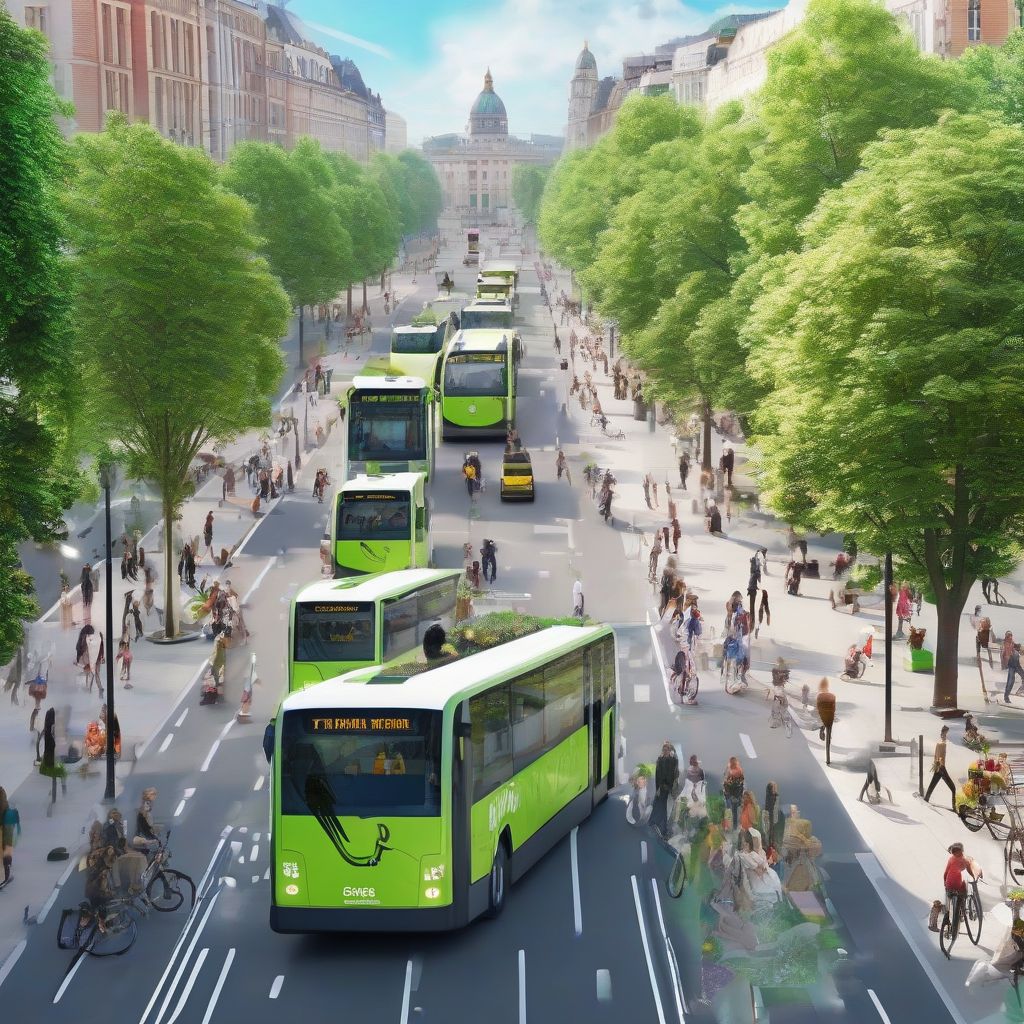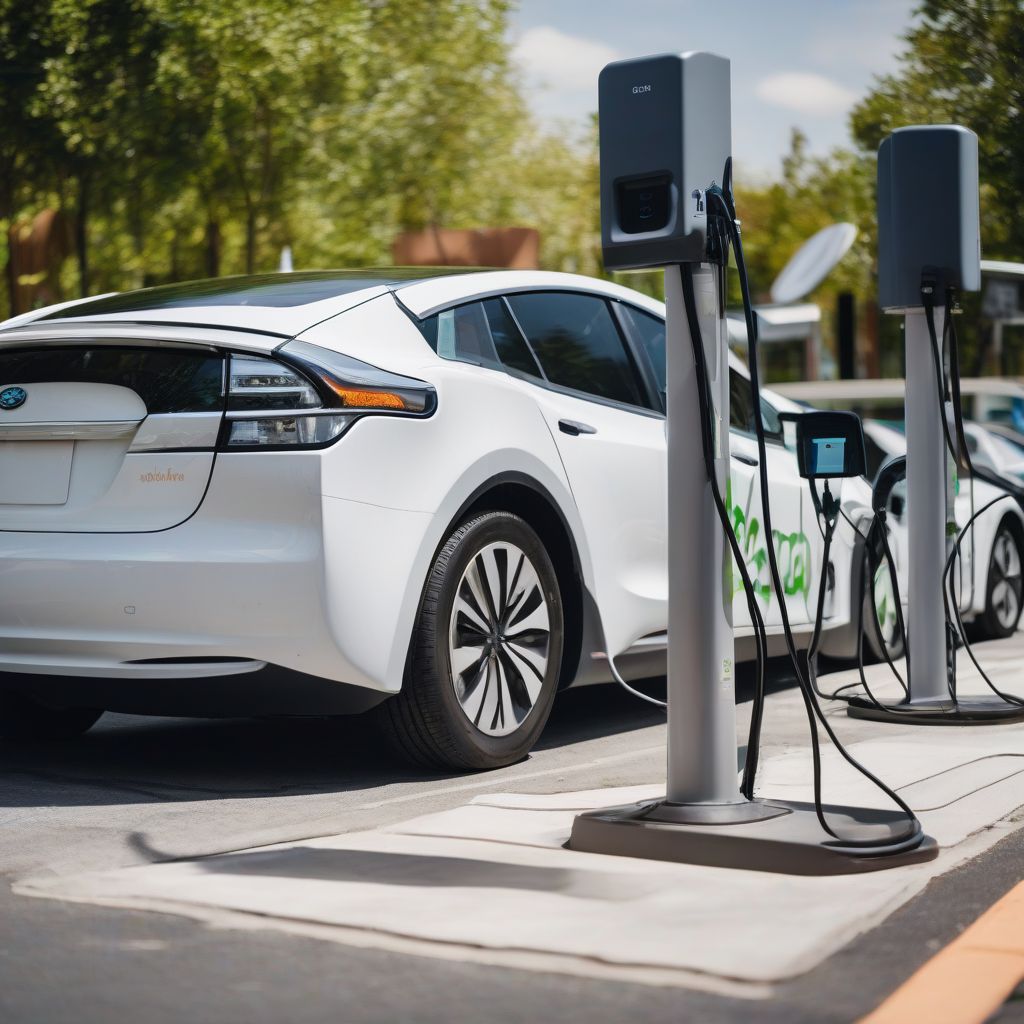Imagine a world where cities breathe easy, the air is clean, and getting around is a breeze. It sounds idyllic, right? Well, achieving this vision of a greener future hinges heavily on sustainable transportation, and the role of policy in driving its adoption cannot be overstated.
Why Sustainable Transportation Matters
Before we delve into the policy aspect, let’s take a moment to understand why sustainable transportation is so crucial. In a nutshell, it’s about meeting our transportation needs without jeopardizing the well-being of our planet or future generations. This means reducing our reliance on fossil fuels, curbing greenhouse gas emissions, and creating transportation systems that are efficient, accessible, and equitable for all.
 Sustainable Transportation City
Sustainable Transportation City
The Role of Policy: A Driving Force for Change
Policies act as the guiding hand, nudging individuals, businesses, and entire communities towards sustainable transportation choices. Here’s how:
1. Incentivizing Green Choices:
- Financial Incentives: Governments can encourage the use of electric vehicles (EVs) through tax breaks, subsidies, and rebates, making them a more attractive option for consumers.
- Charging Infrastructure: Building a robust and accessible network of EV charging stations is vital to alleviate “range anxiety” and promote EV adoption.
- Congestion Pricing: Implementing tolls during peak hours in congested urban areas can discourage driving and encourage the use of public transit, cycling, or walking.
2. Investing in Public Transportation:
- Funding and Expansion: Prioritizing investment in public transportation infrastructure, such as expanding rail lines, bus routes, and light rail systems, is key to making these options more convenient and efficient.
- Affordability and Accessibility: Making public transit affordable and accessible to all, regardless of income or location, is crucial for creating a truly equitable transportation system.
3. Promoting Active Transportation:
- Cycling Infrastructure: Creating dedicated bike lanes, protected intersections, and secure bike parking facilities makes cycling safer and more appealing for commuters.
- Pedestrian-Friendly Design: Implementing policies that prioritize walkability, such as wider sidewalks, crosswalks, and traffic calming measures, encourage people to choose walking for short trips.
4. Regulating Emissions and Fuel Efficiency:
- Emission Standards: Setting stringent emission standards for vehicles pushes manufacturers to invest in cleaner technologies, reducing the overall environmental impact of transportation.
- Fuel Efficiency Standards: Implementing fuel economy standards encourages the production of vehicles that consume less fuel, reducing both costs for drivers and emissions.
5. Land-Use Planning:
- Transit-Oriented Development: Designing communities where residential, commercial, and recreational areas are clustered around public transportation hubs reduces the need for car travel.
- Mixed-Use Zoning: Allowing for a mix of residential, commercial, and institutional uses within the same area enables people to live, work, and shop within closer proximity, reducing overall travel distances.
Case Studies: Policy in Action
Numerous cities and countries around the world are showcasing the transformative power of policy in driving sustainable transportation:
- Copenhagen, Denmark: Known as a cycling haven, Copenhagen has invested heavily in bike-friendly infrastructure, making cycling the preferred mode of transport for many residents.
- Singapore: This island nation has implemented a successful congestion pricing system that has effectively reduced traffic congestion and encouraged the use of public transportation.
- California, USA: With its ambitious zero-emission vehicle mandates and investments in charging infrastructure, California is leading the charge in promoting the adoption of electric vehicles.
 Electric Vehicle Charging Station
Electric Vehicle Charging Station
The Road Ahead: Challenges and Opportunities
While significant strides have been made, the journey towards fully sustainable transportation systems is ongoing. Several challenges remain:
- Political Will: Implementing ambitious policies requires strong political will and public support, which can be challenging to achieve.
- Funding and Resources: Investing in sustainable transportation infrastructure requires significant financial resources, which may be limited, especially in developing countries.
- Public Awareness and Behavior Change: Shifting ingrained travel habits and encouraging widespread adoption of sustainable transportation modes requires sustained public awareness campaigns and education.
Despite these challenges, the future of sustainable transportation is promising. Technological advancements, increasing public awareness, and growing political momentum are creating unprecedented opportunities to revolutionize the way we move.
Driving Towards a Sustainable Future
The role of policy in promoting sustainable transportation is not just about reducing our carbon footprint; it’s about creating healthier, more livable, and equitable communities for everyone. By embracing innovative policies, investing in smart infrastructure, and fostering a collective commitment to change, we can steer ourselves towards a greener and more sustainable future.
What steps can you take to support sustainable transportation in your community? Share your thoughts and ideas in the comments below!
[amazon bestseller=”sustainable transportation”]
